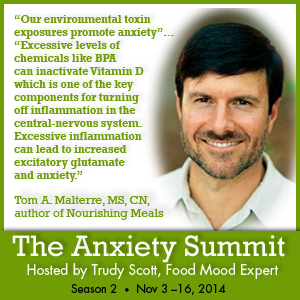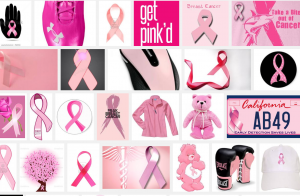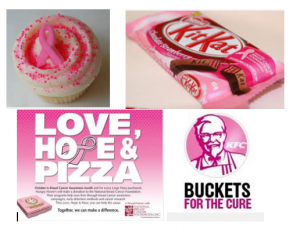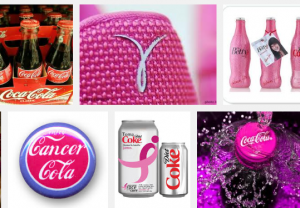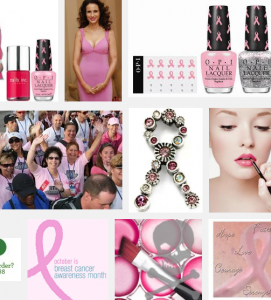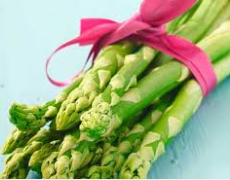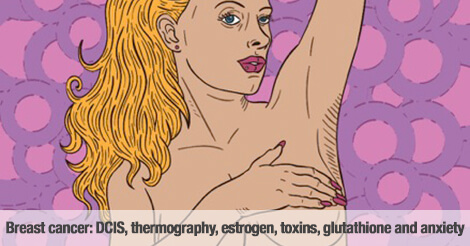
October is Breast Cancer Awareness month so I’ve gathered some wonderful information and resources for you about DCIS, thermography, prevention by addressing estrogen dominance, avoiding endocrine disruptors and environmental pollutants and finally how to boost glutathione for detoxification support.
Ductal carcinoma in situ/DCIS: many don’t even consider this cancer
My good friend and fellow nutritionist Robin Nielsen recently posted about this on Facebook and because it was so beautifully said, I asked if I could share it:
A neighbor just told me this morning that she had a double mastectomy in early August due to cancer, stage 0. And then she told me it was “Ductal carcinoma in situ”. I know many women who have reversed this by changing their diet and lifestyle. This is a touchy subject for many, but it breaks my heart to see women removing their breasts when there’s a chance they don’t have to.
If you are in the thick of this right now, trying to decide what to do, do your research. Get lots of opinions from integrative practitioners. Many don’t even consider this cancer.
And if you’ve had this done yourself, you made the right choice. Because whatever we decide for ourselves is right. Sending love out to all women who have had to make this decision.
I asked Robin to share one of her articles and here it is: What You Need to Know About Your Beautiful Breasts and Breast Cancer. These factors have a big impact on our beautiful breasts:
- The food you eat: inflammatory vs. anti-inflammatory
- The quality and quantity of sleep
- The toxins you’re exposed to: environmental, body care and household products, poor quality foods, toxic people, toxic habits and more
- Your perception of stress and our ability to manage the stress in our lives
- Your thoughts
- And other lifestyle factors like exercise, relationships, your sense of community, etc.
- How you deal with your emotions – your ability to express yourself
- Your body’s nutrient status – especially Vitamin D3
- Your ability to restore, nourish and love yourself, i.e. learning how to receive
- The bras you wear – studies have shown that wearing a bra that’s too tight can restrict vital blood flow and can contribute to toxin build-up in your lymphatic system
Thermography for early detection and accurate test results
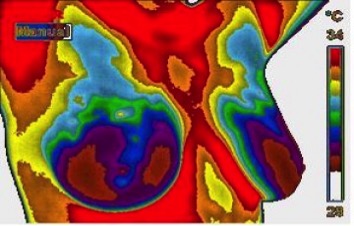
Here are The Best Breast Cancer Screening Tests – 6 Reasons Why I Recommend Thermography from Dr. Christiane Northrup, M.D.’s blog:
- Good for young, dense breasts and implants. Younger breasts tend to be denser. Thermography doesn’t identify fibrocystic tissue, breast implants, or scars as needing further investigation.
- Detect cell changes in arm pit area. The arm pit area is an area that mammography isn’t always good at screening.
- Great additional test. Thermography can be used as an additional test to help women and their care teams make more informed treatment decisions.
- It Doesn’t Hurt. The pressure of a mammogram machine is equivalent to putting a 50-pound weight on your breast, which can be quite painful for most women.
- No radiation. Another reason the United States Preventative Services Task Force reversed its aggressive mammogram guidelines was because of the exposure to radiation. It’s well known that excessive doses of radiation can increase your risk of cancer. It’s ironic that the test women are using for prevention may be causing the very problem they’re trying to avoid in the first place! And this doesn’t even touch on the harm done to the body from unnecessary biopsies, lumpectomies, mastectomies, chemotherapy, radiation treatment, and so forth.
- Thermography is very safe. Thermography is even safe for pregnant and nursing women! It’s merely an image of the heat of your body.
Estrogen dominance as a cause of breast cancer and how to prevent it by eating for hormonal balance
Magdalena Wszelaki, founder of Hormones Balance, shares some signs of estrogen dominance as the leading cause of breast cancer: Breast Lumps? Thyroid Nodules? Horrendous PMS? Endometriosis? In her wonderful article: The Breast Cancer and Estrogen Link | 15 Ways to Prevent and Manage Breast Cancer Naturally, she covers how to move from fear to empowerment and prevention by eating for hormonal balance. The article covers estrogen dominance in detail addressing:
- Most Breast Cancers are not Genetic
- How Breast Cancer Forms and Multiplies
- How Estrogen Feeds Cancer
- Signs of Estrogen Dominance (ED)
- Not All Estrogens Are Bad
But the big takeaway is that as Magdalena says:
You have more power over your risk of breast cancer than you think. There are many steps you can take to protect yourself. Each one of them has other positive domino effects for your hormonal balance and overall health.
She shares how to rotate seeds into your diet to balance hormone levels, how to increase cruciferous vegetables like kale, broccoli, cauliflower and cabbage and how to love your liver. Here are some of Magdalena’s tips for supporting your liver which she calls the “Estrogen Detox Ally”:
A sluggish liver does not carry out its important job of filtering toxins, chemical byproducts and hormonal metabolites from your body. This can leave you with high circulating levels of the dangerous estrogen metabolites. For Breast Protection:
- Add bitters in the form of dandelion leaves and root, burdock, chicory root, parsley, radicchio or bitters in tincture form. They stimulate bile production which then helps “flush out” estrogen and other steroid hormones.
- Add fiber, my favorite being 2 tablespoons of freshly ground golden flax seed. Fiber promotes good bowel movement which is essential in carrying out the toxic estrogens. Chronic constipation can contribute to the re-absorption of antagonistic estrogens back to the blood stream.
- Add one tablespoon of apple cider vinegar or half a lemon to a glass of warm water and drink it before breakfast in the morning. This helps stimulate the gallbladder to release the bile which is instrumental in “flushing out” estrogen.
Be sure to read the entire article here to read more about gut health, red meat, wine, toxins, inflammation, exercise, smoking, the birth control pill (I also covered this and FAM in a recent blog on the connection to subsequent SSRI use), sleep and finally stress and cuddling!
If you want to learn more I encourage you to check out Magdalena’s no-cost “How to Use Food To Rebalance Your Hormones” Online Workshop.
Avoiding endocrine disruptors and environmental pollutants
My friend and colleague Dr. Heather Paulson is the author of the soon to be released Textbook of Naturopathic Oncology. She is board certified in naturopathic oncology providing expert cancer care while creating a plan that restores health. She integrates her specialization in cancer and her love of nutrition, herbs, homeopathy, counseling, traditional healing, and current research to support you during your cancer journey and for cancer prevention. Dr. Paulson shares this about avoiding endocrine disruptors and environmental pollutants:
Endocrine disruptors are things in our environment that influence our hormonal system. You have probably heard about how plastics have been causing young boys to have feminine breasts. This plastic phenomenon is due to plastic disrupting the endocrine (or hormonal) system in boys. But the endocrine effects of environmental pollutants impacts both men and women. Some of the most common endocrine disruptors you are coming on contact with include plastic, pesticides, fragrances, beauty products, and cleaning products. Eliminating these from your personal environment is a critical piece of cancer prevention that is often missed.
She created this quiz How Toxic Is Your Home to help you see how well you are doing with endocrine disruptors. You can also find several checklists on her website to help you eliminate the necessary chemicals from your kitchen, yard, bedroom, and bathroom.
Boost glutathione levels to support the body’s detoxification channels

And finally, my friend and colleague (and fellow South African) Kirsten Nussgruber shares the importance of reducing the toxic burden. When faced with the biggest challenge of her life – being diagnosed with aggressive breast cancer twice within a short three year period – Kirsten was forced to completely reevaluate what she believed was already a healthy lifestyle and now advocate for:
- Eating clean and real food
- Applying clean cosmetics and skin care products
- And supporting the body’s detoxification channels
Kirsten shares the role of glutathione and ways to support body’s detoxification channels by boosting glutathione levels, often called your master detoxifier.
In its role as detoxifier it plays a crucial role in helping the body bind and get rid of many environmental toxins such as herbicides, pesticides, fungicides, insecticides, solvents, dyes, plastics, detergents and nitrosamines often found in processed foods.
Glutathione is also known to be cancer-preventing and has been found deficient in cancer patients. It can strengthen natural killer cells, a part of your immune system you want to have ready for action at all times!
In her blog post, she covers glutathione supplementation and shares a list of whole foods that boost glutathione production:
asparagus, acornsquash, avocados, broccoli, cabbage, cantaloupe, garlic, grapefruit, leeks, okra, onions, oranges, peaches, potatoes, spinach, strawberries, tomatoes, walnuts, watermelon, and zucchini.
Don’t be driven by fear and anxiety
As I said in my 2013 Breast Cancer Awareness blog: don’t be driven by fear and anxiety, instead use these wonderful resources as tools so you can be proactive and prevent breast cancer.
If you do get to a place where the anxiety and fear becomes overwhelming, don’t forget about the targeted individual amino acids like GABA and tryptophan for eliminating the anxiety and worry, obsessive thinking, negative self-talk, insomnia and overwhelm.
Here’s to beautiful healthy breasts for you and every woman!


